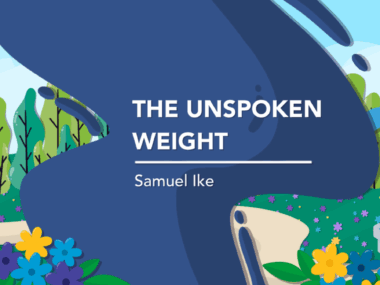The hidden signs of myeloma that whisper before they shout
Why it's important to pay attention to subtle changes
Written by |

When people think of cancer, they often imagine clear warning signs, such as a lump, dramatic weight loss, or a test result that leaves no doubt. But with myeloma, the truth is far more elusive.
This rare blood cancer hides in plain sight, showing up as everyday discomforts we know all too well. Fatigue? Who isn’t tired these days? Back pain? Must be bad posture. Thirst? Maybe it’s just the heat.
For my mum, it started with pain. She often woke up with a stiff neck, which she blamed on an awkward night’s sleep. But over time, those “cricked necks” came closer and closer together. Relief was harder to find, and eventually it wouldn’t come at all.
The slow creep of symptoms
The pain deepened until it began stealing little pieces of her independence. At first, she struggled with the heavier kitchen items, things most of us wouldn’t think twice about lifting. But soon, even the tea kettle felt impossible to raise. As the pain worsened, she began to call it what it was: bone pain — sharp, relentless, and impossible to ignore.
Then came the thirst. At first, it was an extra glass of water here and there. But gradually, sips became gulps, and then entire jugs. No matter how much she drank, her body refused to be satisfied. My children would tiptoe into her darkened room, carrying glasses of water for their grandma, hoping to bring her some relief. But nothing seemed to help.
When the neck pain and thirst reached their worst, just before her diagnosis, she also began to suffer from slight confusion and memory issues — another way the disease was silently tightening its grip.
And then there was the tiredness. My mum had always been full of energy, fiercely disciplined about her health. She went to the gym every morning for two classes, and then came home and walked three miles with her friend. Slowly, that routine began to unravel. Two classes became one. The 3-mile walks grew shorter and shorter until eventually she couldn’t do either. What looked like ordinary fatigue was really another piece of the puzzle.
Another symptom crept in quietly: insomnia. She began waking at 3 or 4 a.m. and was unable to get back to sleep. In those early hours, she would sit at the table with her needle felting or lose herself in small craft projects, trying to fill the endless time of nights that no longer brought her peace.
There were other signals, too: the tingling in her hands and feet that seemed to come from nowhere. All of them were pieces of the same story, one we didn’t yet know we were living. Because my mum didn’t get early detection, the disease had time to take its toll. She suffered a broken neck against a tumor, and her spine and skull were left riddled with what doctors described as “millions of tiny holes.” Words like arthritis or osteoporosis couldn’t explain away what was really happening: Multiple myeloma was hollowing her bones from the inside out.
What makes myeloma so difficult is that none of these signs appear extraordinary on their own. A stiff neck, thirst, tiredness, tingling hands — they can all be explained away. Life offers easy answers: bad sleep, busy days, not enough water, too much exercise. But when these symptoms become persistent, when they chip away at daily routines and change the fabric of everyday life, they can signal something far more serious.
That’s why awareness matters. We want people to pay attention to these subtle changes and not dismiss them as just part of getting older or being run-down. Going to the doctor, asking questions, and pushing for answers can make all the difference. Something as simple as a blood test to check cell counts, or a urine test to look for abnormal protein, can reveal what the body has been trying to whisper all along.
It’s also important to know that myeloma is not hereditary. Most cases are believed to be the result of spontaneous mutations that occur as people age, not something passed down through families. That means anyone can be affected — and awareness is our greatest tool for catching it early.
Early diagnosis not only provides clarity, it also makes the path easier for both patients and doctors. It means treatment can begin before bones start breaking, before kidneys are overwhelmed, before the disease robs someone of the simple independence of lifting a kettle or walking with a friend.
And most importantly, early detection gives people a chance at a longer life — more mornings, more laughter, more moments with the ones we love.
Note: Rare Cancer News is strictly a news and information website about the disease. It does not provide medical advice, diagnosis, or treatment. This content is not intended to be a substitute for professional medical advice, diagnosis, or treatment. Always seek the advice of your physician or other qualified health provider with any questions you may have regarding a medical condition. Never disregard professional medical advice or delay in seeking it because of something you have read on this website. The opinions expressed in this column are not those of Rare Cancer News or its parent company, Bionews, and are intended to spark discussion about issues pertaining to rare cancer.







Leave a comment
Fill in the required fields to post. Your email address will not be published.